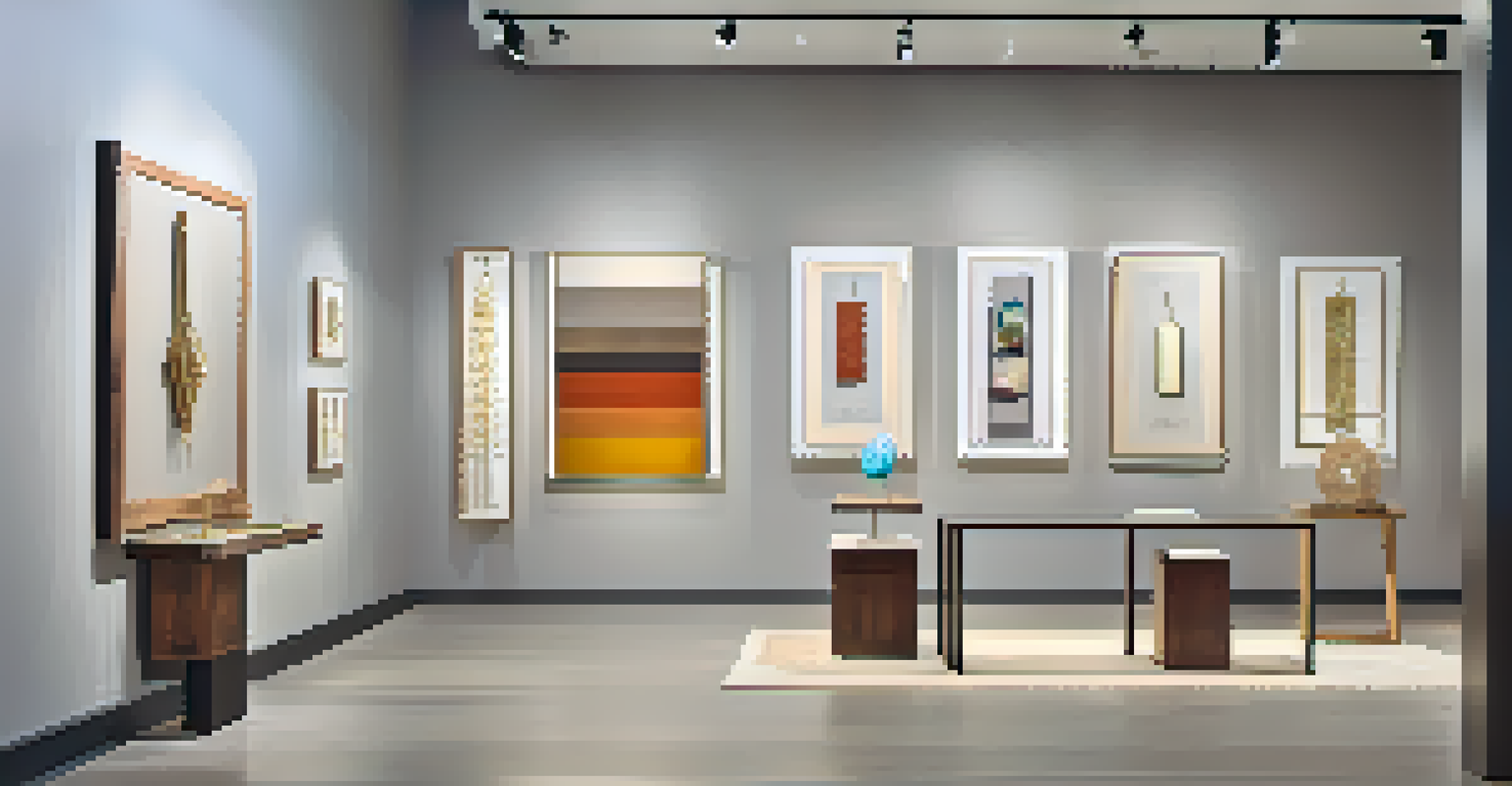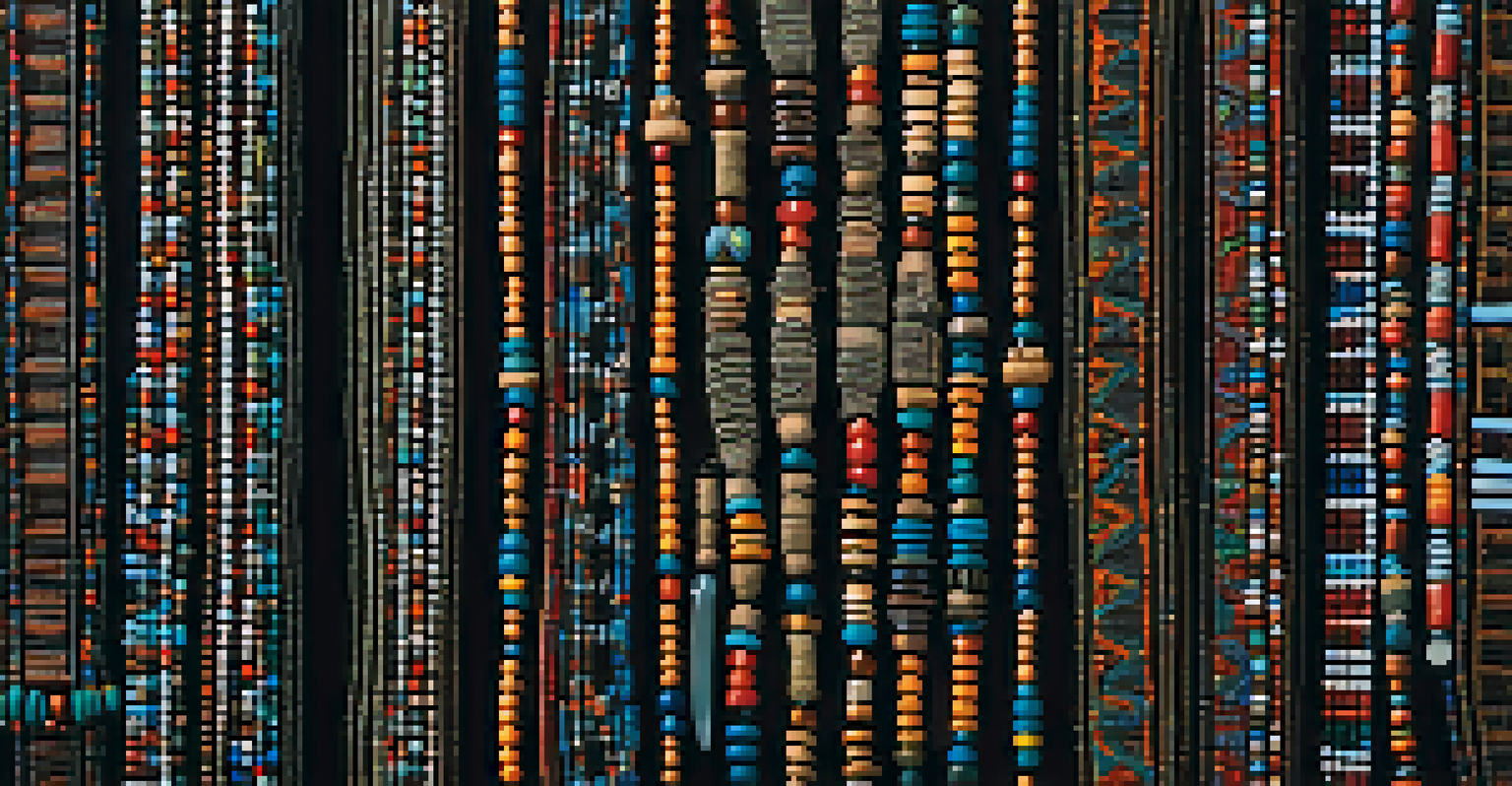Understanding Jewelry Making Styles: Modern vs. Traditional

Defining Traditional Jewelry Making Styles
Traditional jewelry making encompasses techniques and designs that have been passed down through generations. This style often reflects cultural heritage and uses materials that have historical significance, like gold, silver, and precious stones. Craftsmen might employ methods like hand-forging, stone carving, and intricate metalworking, which require a deep understanding of the craft. An example would be the art of filigree, where thin wires of gold or silver are twisted and soldered to create delicate patterns, often seen in vintage pieces.
Jewelry takes people's minds off your wrinkles.
The allure of traditional jewelry lies not just in its aesthetic, but in the stories behind each piece. Many designs are symbolic, carrying meanings that resonate with the wearer's culture or personal beliefs. For instance, Indian jewelry often features motifs like peacocks and flowers, which have rich cultural significance. This connection to heritage creates a sense of identity and continuity, making traditional pieces timeless treasures.
Moreover, traditional styles are more than just physical objects; they often involve rituals and customs surrounding their creation and wear. For example, in many cultures, certain pieces are gifted during significant life events like weddings or births. This imbues traditional jewelry with emotional value, making it not just an accessory but a cherished heirloom.
Exploring Modern Jewelry Making Styles
Modern jewelry making embraces innovation and experimentation, often breaking away from the norms established by traditional crafts. This style is characterized by the use of unconventional materials like acrylic, resin, and even recycled objects, pushing the boundaries of what jewelry can be. Designers often blend techniques from various artistic disciplines, creating pieces that are not just adornments but statements. Think of bold, geometric designs that utilize 3D printing technology—an exciting leap from classical methods.

Another hallmark of modern jewelry is its emphasis on personal expression. Many contemporary artists aim to evoke emotions or provoke thought through their work, turning jewelry into a canvas for artistic exploration. For example, a piece might incorporate everyday items, transforming them into wearable art that challenges the wearer's view on beauty and utility. This shift allows individuals to express their unique identities and experiences through their jewelry.
Traditional Jewelry Reflects Heritage
Traditional jewelry making showcases techniques and designs that are deeply rooted in cultural heritage and often imbued with significant personal and symbolic meanings.
Sustainability is also a key aspect of modern jewelry making, with more designers focusing on eco-friendly practices. From sourcing ethically mined stones to using recycled metals, modern jewelers are increasingly aware of their environmental impact. This conscientious approach not only appeals to eco-minded consumers but also reflects a broader cultural shift towards responsible consumption, making modern jewelry both stylish and sustainable.
Key Differences Between Modern and Traditional Styles
While both modern and traditional jewelry share the common goal of adornment, their approaches and philosophies differ significantly. Traditional styles often prioritize craftsmanship and heritage, showcasing intricate techniques that reflect the artisans' skills honed over years. In contrast, modern styles focus on innovation, often valuing concept and creativity over traditional techniques. This shift allows for a wider range of expressions and interpretations in contemporary designs.
Jewelry is a very personal thing…it should tell a story about the person who’s wearing it.
Another major difference lies in the materials used. Traditional jewelry typically employs classic materials like gold, silver, and gemstones, which have stood the test of time. On the other hand, modern jewelry often experiments with alternative materials, embracing a more eclectic palette. This not only opens doors for creativity but also challenges the perception of what constitutes valuable jewelry.
Moreover, the cultural significance attached to each style varies greatly. Traditional jewelry is often steeped in cultural narratives and rituals, whereas modern jewelry tends to focus more on personal expression and individualism. This fundamental difference shapes the way each style is perceived and appreciated in society, influencing everything from marketing strategies to consumer choices.
Common Techniques in Traditional Jewelry Making
Traditional jewelry making is rich in techniques that have been refined over centuries. Techniques such as lost-wax casting, granulation, and stone setting are foundational to creating stunning pieces that stand the test of time. For instance, lost-wax casting involves creating a wax model of the jewelry piece, which is then encased in a mold. Once the mold is heated, the wax melts away, leaving a space for molten metal to be poured in, resulting in intricate designs that are hard to replicate with modern methods.
Another fascinating technique is enameling, which involves fusing glass powder to metal surfaces to create colorful, durable designs. This method has roots in ancient civilizations and continues to be celebrated for its vibrant results. Traditional jewelers often combine these techniques, layering them to create depth and texture that tell a story with every piece.
Modern Jewelry Embraces Innovation
Modern jewelry making breaks away from traditional norms by incorporating unconventional materials and techniques, allowing for greater personal expression and sustainability.
The meticulous nature of these techniques requires not only skill but also patience, as many traditional methods can be time-consuming. This dedication to craftsmanship is what often draws collectors and admirers to traditional jewelry, as each piece represents hours of labor and artistry. It’s this connection between the maker and the material that gives traditional jewelry its enduring appeal.
Innovative Techniques in Modern Jewelry Making
Modern jewelry making is a playground for innovation, where technology meets artistry in exciting ways. One notable technique is 3D printing, which allows designers to create complex shapes and structures that would be impossible to achieve through traditional methods. This technology not only enhances creativity but also reduces material waste, aligning with the growing trend towards sustainability in fashion.
Another innovative approach is the use of mixed media, where jewelers combine various materials—think metal, wood, and fabric—to create unique, eye-catching pieces. This fusion not only showcases the designer's versatility but also allows for greater personalization, appealing to a diverse audience. For example, a necklace might feature a wooden pendant alongside metallic elements, creating a striking contrast that captures attention.
Moreover, modern jewelers often utilize digital tools for design and visualization, enabling them to experiment with colors, shapes, and styles before committing to the final piece. This technological integration streamlines the creative process and encourages experimentation, leading to groundbreaking designs that redefine what jewelry can be. The result? A vibrant jewelry landscape that continually evolves, reflecting current trends and individual expression.
Cultural Influences on Jewelry Styles
Cultural influences play a significant role in shaping both traditional and modern jewelry styles. Traditional jewelry often reflects the values, beliefs, and artistry of a particular culture, serving as a visual representation of its history. For example, African tribal jewelry is known for its bold colors and unique shapes, often incorporating beads and natural materials that hold cultural significance. Each piece tells a story, connecting the wearer to their roots and heritage.
In contrast, modern jewelry styles frequently draw inspiration from a variety of cultural influences, leading to a fusion of aesthetics. Designers might incorporate elements from different traditions, creating pieces that celebrate diversity and global interconnectedness. This blending can be seen in contemporary designs that feature intricate patterns reminiscent of traditional motifs, combined with modern materials and techniques.
Future Blends Tradition with Modernity
The future of jewelry making is set to merge traditional craftsmanship with modern technology and sustainable practices, resulting in diverse and meaningful designs.
Additionally, cultural events and movements often inspire trends within the jewelry industry. For instance, the rise of minimalism and sustainable fashion has influenced many modern designers to create pieces that are not only aesthetically pleasing but also socially conscious. This evolving landscape highlights the dynamic relationship between culture and jewelry, showcasing how styles can adapt and transform over time.
The Future of Jewelry Making Styles
As we look to the future, the jewelry industry is poised for exciting transformations that blend tradition with modernity. The growing emphasis on sustainability is likely to drive innovation, with designers increasingly seeking out eco-friendly materials and ethical practices. This shift reflects broader consumer trends, as more individuals prioritize conscious consumerism, favoring brands that align with their values.
Technology will continue to play a crucial role in shaping the future of jewelry making. Techniques like 3D printing and digital design tools will enable artists to push creative boundaries further than ever before. As these technologies become more accessible, we can expect to see a wider array of styles and designs that cater to diverse tastes and preferences, making jewelry more inclusive.

Ultimately, the future of jewelry making styles will likely be characterized by a blend of traditional craftsmanship and modern innovation. As artists draw from both worlds, we will see unique pieces that honor heritage while embracing contemporary ideals. This evolution not only enriches the jewelry landscape but also ensures that it remains relevant and meaningful in our ever-changing world.